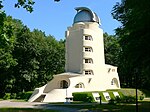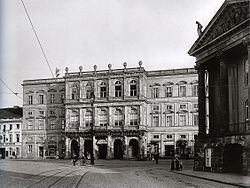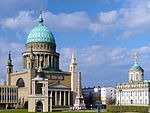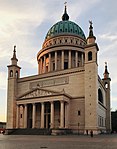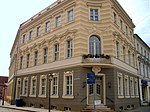Landtag of Brandenburg
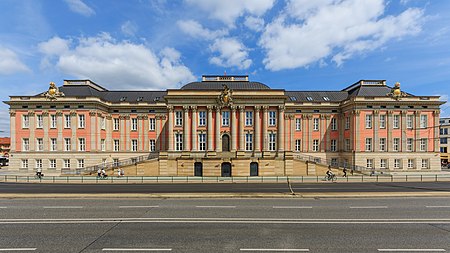
The Landtag of Brandenburg is the unicameral legislature of the state of Brandenburg in Germany. Its 88 Members of Parliament are usually elected every 5 years. It is responsible for deciding on state laws, controlling the state government and public administration, deciding on the budget and electing its presidium, state constitutional judges, the members of the state court of audit and the minister president. On 1 September 2019 elections to the 7th Landtag were held. Six political parties managed to gain representation. The SPD became the largest party in the Landtag with 25 seats, followed by the AfD with 23 seats, the CDU with 15 seats, The Greens and the Left with 10 seats each and finally the BVB/FW won 5 seats, making it the smallest party represented in the Landtag. Elections to the 1st Landtag of Brandenburg were held in 1946 in the Soviet Occupation Zone. The composition of the 2nd Landtag was determined before the 1950 election. This Landtag only continued to exist until 1952. It has existed in its current form since the recreation of the state of Brandenburg following reunification. Since the 1990 election the SPD has remained the largest party and participated in all state governments since and all minister presidents of the state to this day have been from the SPD. The office has been held by Dietmar Woidke since 28 August 2013.
Excerpt from the Wikipedia article Landtag of Brandenburg (License: CC BY-SA 3.0, Authors, Images).Landtag of Brandenburg
Am Havelblick, Potsdam Südliche Innenstadt
Geographical coordinates (GPS) Address Nearby Places Show on map
Geographical coordinates (GPS)
| Latitude | Longitude |
|---|---|
| N 52.387777777778 ° | E 13.063333333333 ° |
Address
Ehem. Reichskriegsschule und Brandenburgischer Landtag
Am Havelblick 8
14473 Potsdam, Südliche Innenstadt
Brandenburg, Germany
Open on Google Maps




